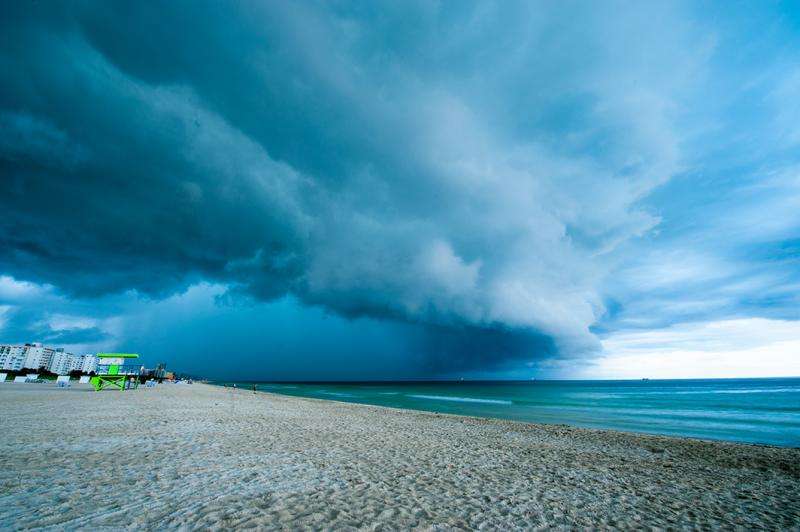Thousands of pieces of data demonstrate that sea levels and extreme phenomena are evolving independently

The negative effects of climate change are becoming more and more intense and noticeable in the sea and coastal areas. One of the most damaging consequences of this phenomenon is the rise in sea levels that has been occurring since the beginning of the 20th Century, an action that may result in floods, the breaching of dykes or flood barriers (due to increasingly powerful storms), the destruction of ecosystems in low-lying areas or the erosion of beaches, among many other things; a series of impacts of great significance in ecological and socioeconomic terms.
Together with the rise in sea levels, extreme phenomena associated with storms have also become a problem caused by climate change, a setback that added to the former, can also cause significant damage. Therefore, we are confronted with two separate phenomena that converge on a point causing sometimes irreparable damage.
On studying these two phenomena, the researchers found that "in general, the sea level readings link all the processes. When we study this, we get a figure that indicates the height of the water but we do not know whether that value actually corresponds to the average level or to the storm. As a consequence, these elements are studied together and due to this, we have understood up until now, that almost all the changes in extreme phenomena are associated with changes in sea level, that is to say, it has always been thought or it has been assumed that they are progressing hand in hand", explains Marta Marcos, researcher at the Mediterranean Institute of Advanced Studies (IMEDEA) and the person responsible for this project in which the University of Cadiz has collaborated.
It was this point that the researchers led by Doctor Marcos decided to focus on because "what we asked ourselves was, how, if both are separate processes, does one evolve at the rhythm of the other?" In order to do this, the professor from the Department of Statistics and Operations Research of the UCA, Ángel Berihuete, using an extension of Kalman filters for Poisson processes, "analysed thousands of pieces of data from 77 sets registered in the last 100 years", a direct consequence of this was that "we could establish that both phenomena not only occur independently but also are evolving separately. Moreover, up until now there had been indications in some places, of the existence of extreme phenomena that were evolving more quickly or more slowly than the sea levels, but they were only indications, nobody had carried out an analysis like ours to demonstrate this".
So therefore, the researchers have analysed both components individually, using all the historical sets available in all the international data repositories as a reference, although largely focusing on Europe and the coast of America. "We have been able to separate the components and we have isolated those associated with storms. This has allowed us to do two things: the first has been to develop and start using a new, complex and robust methodology that has provided us with very good results. The second is that apart from the results, from now on we must take into account the fact that the trends in average levels, from a scientific point of view, and the variability of the storms are independent.", Marta Marcos maintains.
Thus, it could also be observed that "There was a certain variation among these phenomena and that that moreover, this variation could be grouped regionally, that is to say, it would appear to depend on large-scale atmospheric processes, with large-scale connections. Across the North Atlantic, for example, it varies more or less in the same way, although with corresponding differences between the European and American coasts". As well as this, the scientific team has also been able to observe that the more intense phenomena tend to occur at the same time, that is to say, "at times with a greater number of extremes, these extremes tend to be stronger", sentences doctor Marcos.
The results of this intense work have been made public in an article entitled "Long-term variations in global sea level extremes" in the journal Oceans. The authors of this work are, along with Marta Marcos and Ángel Berihuete, the researchers Francisco M. Calafat, from the National Oceanography Centre in Southampton (UK), and Sönke Dangendorf, from the University of Siegen (Germany).
After this discovery the team wants to go one step further: "Up until now, we have been working with the data sets that were available to us. Now, a new campaign for data collection has been carried out, and we have as many as 1200 new sets that were not previously found in international repositories. Thus, the immediate future will be to corroborate everything that we have done and try to cover more worldwide coastal points", they conclude.
More information: Marta Marcos et al. Long-term variations in global sea level extremes, Journal of Geophysical Research: Oceans (2015). DOI: 10.1002/2015JC011173
Provided by Universidad de Cádiz




















